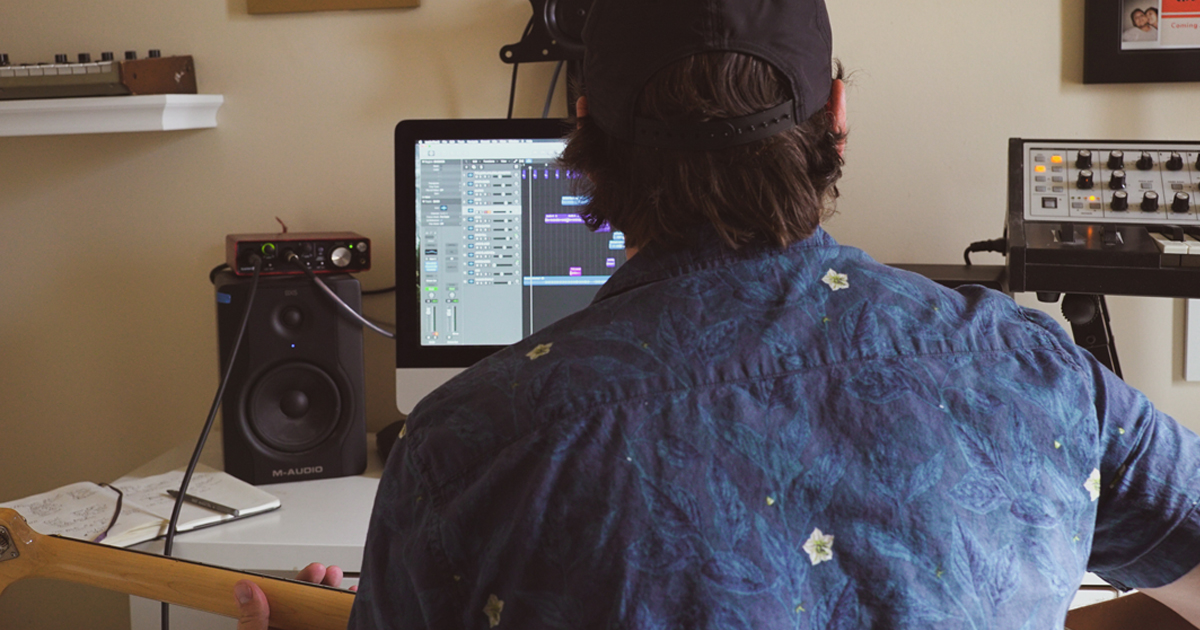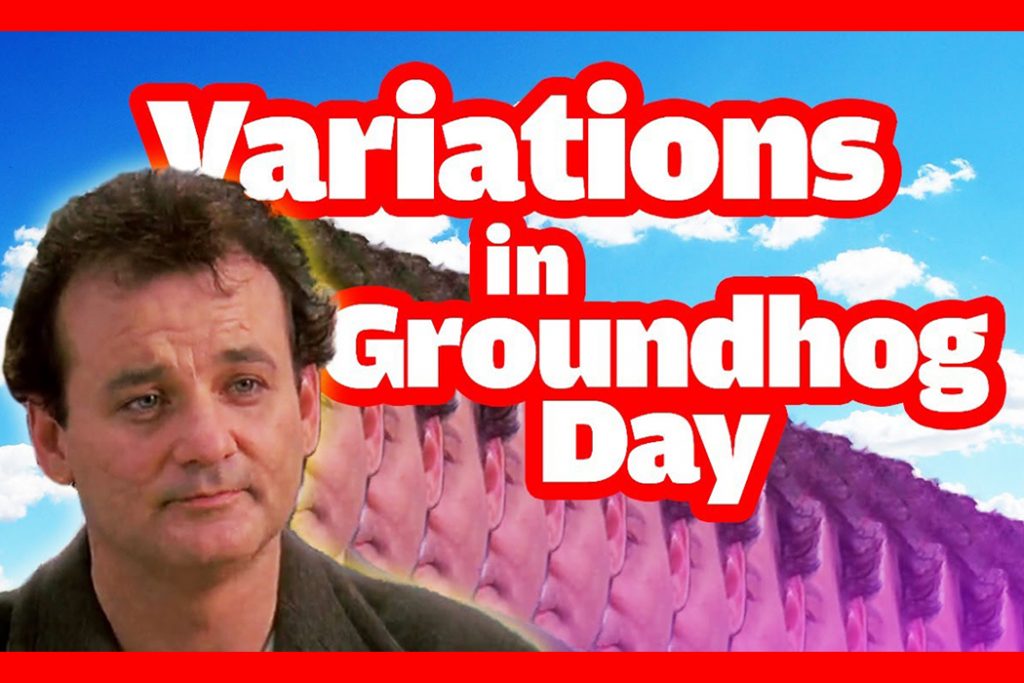We’re delighted to share this excellent video exploring the structures and functionality of the music in the 1993 film, Groundhog Day, courtesy of our colleague, composer and music analyst Howard Ho. For more great videos, check out Howard’s YouTube channel, and for hundreds more deep-dive music lessons, subscribe to Soundfly.
By Howard Ho
While the film may be a huge metaphor for life under quarantine, 1993’s Groundhog Day is also hugely enjoyable for the way it uses music to reflect its themes. In particular, it approaches those dramatic themes in a musical way, by deploying a compositional technique called “theme and variation” in order to compliment and reflect the sentiments of repetition and cycling, and ultimately resolution.
But to start off, let’s talk about Phil.

Phil’s day begins with something that has minimal variations, Sonny and Cher’s “I Got You Babe.” Not only does Phil Connors wake up to the same song every day, but the song itself is relatively static and unvaried musically. The chorus of the song, which is what Phil mainly hears, consists of only two chords, F and B♭.
However, that B♭ is actually inverted to feature F in the bass, so from a musical standpoint, the chords don’t really move us anywhere, they just revolve. And the words to the music are “I Got You Babe,” just four words repeated ad nauseam. This is absolutely the perfect metaphor for the monotony of Phil’s repeated time loop, and a perfectly chosen song.
But then as the loop eventually progresses, Phil learns he can change his behavior and get vastly different results out of the same recurring day. This idea of a repeated loop, but with slightly new changes each time around, is similar to how the musical structure of theme and variation functions.
Theme and variation is a classical form that has been used for hundreds of years. You can find great examples of it in the music of Mozart and Beethoven, as well as throughout the modern era. But the example I like to use is Weezer’s “The Greatest Man That Ever Lived.”
In it, Weezer created ten variations on the Shaker hymn “Simple Gifts,” which is the same tune Aaron Copland used in his “Appalachian Spring Suite.” After the theme is stated simply on piano, we get a series of variations in different styles ranging from rap to Aerosmith to Jeff Buckley to Nirvana to Green Day to finally a variation that represents Weezer themselves.
It’s an amazing song and a fun example of using stylistic development as a compositional challenge.
+ Hey Flypaper readers, Soundfly’s got a brand new podcast debuting on August 19th called… you guessed it: “Themes and Variation!” Learn more or subscribe via Apple Podcasts here.

Theme and variation becomes a pivotal aspect of the film between the plot points of the second and third acts.
A brief aside: Hollywood film structure is often organized into three acts, which usually features a Setup, a Confrontation, and a Resolution (you can see similarities in a lot of pop music, right?). There’s usually a big turning point that occurs between Acts 2 and 3, representing growth and change for our main character or protagonist.
In Groundhog Day, this plays out when Phil begins to no longer wallow in self-pity and try to kill himself, or engage in superficial pleasures. He’s growing more mature, and one thing he tries to do in order to become more mature is learn the piano. As it turns out, the piece of classical music he learns is a famous work of theme and variation, Sergei Rachmaninoff’s “Rhapsody on a Theme by Paganini.”
Rachmaninoff’s “Rhapsody” features 24 variations, but the one that Phil learns is the one that has crossed over into pop culture time and time again. It’s the 18th variation, which has been used in films like Somewhere In Time, TV series like The Good Wife, and even video games like Gran Turismo 6.
It’s an extremely beautiful piece — which is probably why it was chosen, since the script says Phil has to play a song that nearly brings his love interest, Rita, to tears.
By the end, Phil not only plays the Rachmaninoff 18th variation on piano, but he then adds his own jazz variation on top of that. Certainly Rachmaninoff would have been proud, and subconsciously as viewers we certainly are too.
+ Read more on Flypaper: “How Jonny Greenwood Uses Materiality, Clusters, and Aleatoricism in His Film Music.”
What’s even more impressive is that the Rachmaninoff 18th variation is then revealed as the basis for the film score composer George Fenton’s love theme. The theme first appears at that plot point between Acts 2 and 3 when Phil essentially declares his love for Rita.
Let’s back up and break this meta-variation down.
Rachmaninoff is using Paganini’s original melody upside down, almost like a reflection in a pool. This is called an inversion. Fenton then takes that melody and flips it horizontally in what’s called the retrograde melody to create his love theme. At key moments when Phil is with Rita, we hear that theme folded into the background music.
The final time we hear this love theme, it’s transformed into a more triumphant version. Phil wakes up on February 3rd, only to have broken through his endless loop, as if love itself was what allowed him to break free. The music helps us see how far we’ve come, and resolves to a place that needs no further variations.
+ Create stronger music and make more fluent use of the emotional capabilities of chord progressions and harmonic theory with Soundfly’s courses, Unlocking the Emotional Power of Chords and The Creative Power of Advanced Harmony — preview them for free today!
—
Howard Ho is a composer, sound designer, and YouTuber who analyzes music on his channel, including over a dozen videos on the musical, Hamilton.




